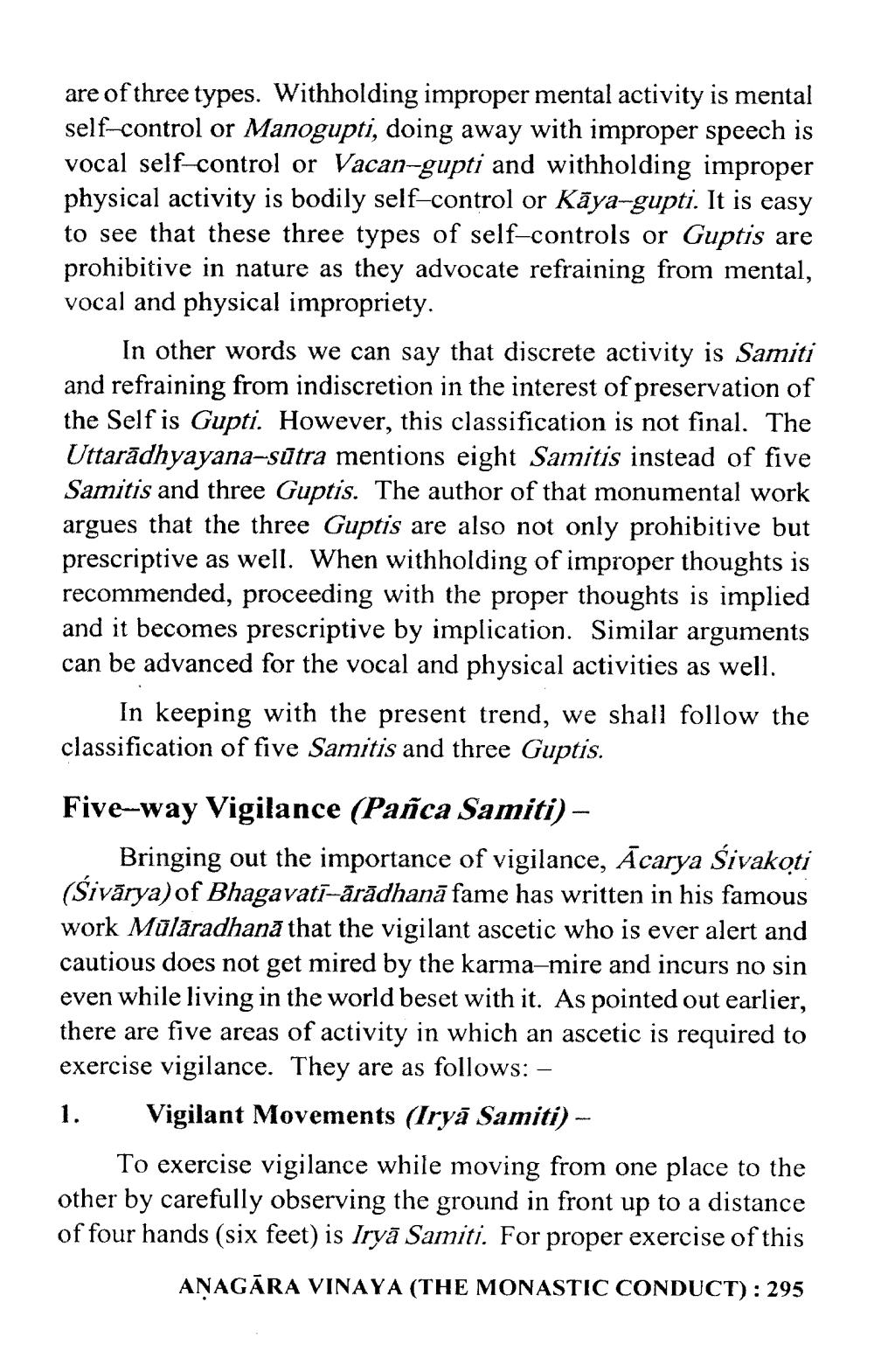________________
are of three types. Withholding improper mental activity is mental self-control or Manogupti, doing away with improper speech is vocal self-control or Vacan-gupti and withholding improper physical activity is bodily self-control or Kāya-gupti. It is easy to see that these three types of self-controls or Guptis are prohibitive in nature as they advocate refraining from mental, vocal and physical impropriety.
In other words we can say that discrete activity is Samiti and refraining from indiscretion in the interest of preservation of the Self is Gupti. However, this classification is not final. The Uttarādhyayana-sūtra mentions eight Samitis instead of five Samitis and three Guptis. The author of that monumental work argues that the three Guptis are also not only prohibitive but prescriptive as well. When withholding of improper thoughts is recommended, proceeding with the proper thoughts is implied and it becomes prescriptive by implication. Similar arguments can be advanced for the vocal and physical activities as well.
In keeping with the present trend, we shall follow the classification of five Samitis and three Guptis.
Five-way Vigilance (Pañca Samiti) -
Bringing out the importance of vigilance, Acarya Sivakoti (Śivārya) of Bhagavatī-ārādhanā fame has written in his famous work Mūlāradhanā that the vigilant ascetic who is ever alert and cautious does not get mired by the karma-mire and incurs no sin even while living in the world beset with it. As pointed out earlier, there are five areas of activity in which an ascetic is required to exercise vigilance. They are as follows: – 1. Vigilant Movements (Irya Samiti) -
To exercise vigilance while moving from one place to the other by carefully observing the ground in front up to a distance of four hands (six feet) is Iryā Samiti. For proper exercise of this
ANAGĀRA VINAYA (THE MONASTIC CONDUCT): 295




